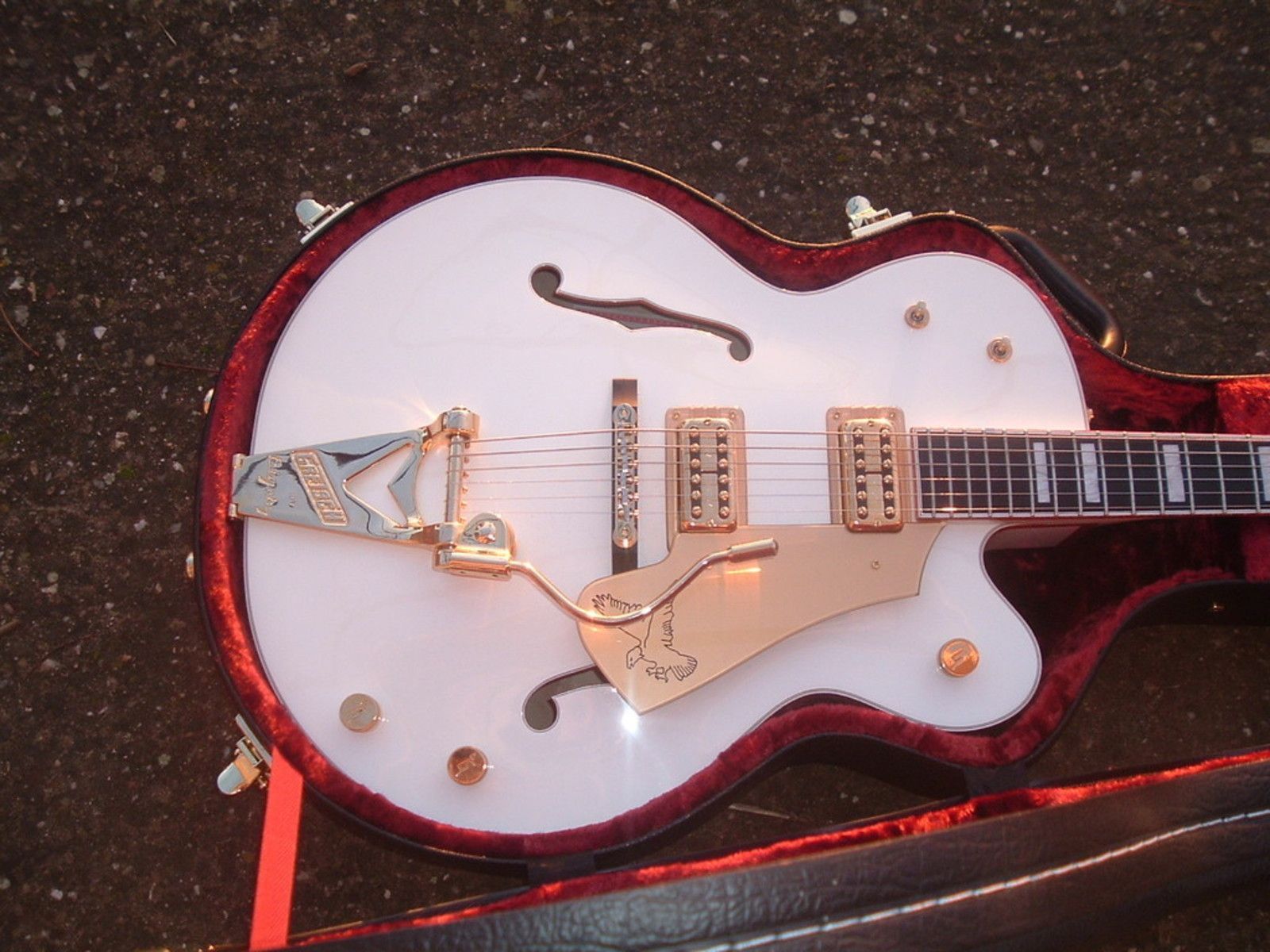

Baldwin’s leveraged buyouts caught up with in 1983 and the company went bankrupt, a year later Baldwin’s CEO bought the music division and brought back Duke Kramer to run Gretsch. The 70s would also see labour upheaval and at least two factor fires, and in 1981 Baldwin shuttered production of Gretsch guitars altogether. The Baldwin era would be a period of turmoil for the company – the Baldwin company never understood the desire for Gretsch to appeal to the rock ‘n’ roll audiences of the day, and as music got heavier throughout the 70s the brand struggled to remain relevant. Bill sadly passed away in 1948, causing Fred to leave the navy and return to the company his father had entrusted to him. Instead, Bill turned Gretsch’s factories over to making ‘entertainment kits’ for servicemen, including ukuleles, ocarinas and harmonicas by the thousand.

His brother Bill took over the company on an interim basis, but wartime restrictions on metal use meant that instrument makers were left unable to produce their wares – something that was particularly true of drum makers such as Gretsch. Fred Sr retired in 1942 and left his son Fred Jr in charge of the company, but not long after he was drafted.

The Second World War was a period of great transition for Gretsch. In 1941 Duke was drafted, and served in the Special Service Music Division in the Pacific theatre – putting on entertainment for the troops and getting a first- hand glimpse at the musical trends that would amalgamate into ‘pop’ music in the post-war era. It was the start of a 70-year association that would change the course of Gretsch and its guitars forever.ĭuke wasn’t polishing horns for long, and soon he was travelling all over the southern United States as a purchasing agent, visiting music shops and finding out exactly what they wanted so that he could funnel this information back to Gretsch’s HQ. In 1935 a 19-year-old named Charles ‘Duke’ Kramer joined the company making $11 a week polishing horns. Like most of its competitors initially the company targeted the popular jazz and country musicians that dominated the airwaves in this era – broadcast radio having exploded in America in the post-war period.Īt this time, however, Gretsch was still primarily a drum company, having revolutionised the construction of drum shells in the 20s and had built on that success further with the revolutionary Broadkaster set. The first Gretsch-branded guitar arrived by 1928, but at the time was one of 3,000 instruments that the Gretsch company offered in its catalogue. Image: Ebet Roberts / Redferns Guitar’s not yet the star

And as the roaring twenties became the 1930s, he realised that there was a growing market for a new instrument – the guitar. The Gretsch Manufacturing Company was incorporated in 1903 and by the time the first World War broke out, Gretsch had six properties across New York City, including a 10-storey factory building on Brooklyn’s Broadway that remained owned by the Gretsch family until 1999.įred had a keen marketing mind and a knack for understanding what products and trends would move the needle of public demand. As his grandson Fred W Gretsch, the Gretsch family was blessed with the “entrepreneurial gene, not the artistic gene” and within two decades Fred had grown the company to become one of the premier instrument manufacturers in the USA. It helped that young Fred was no ordinary teenager. Rosa was encouraged by many to sell the shop to provide for her seven children, but she was determined to fulfil her late husband’s dream. Stewardship of his shop passed to his wife, Rosa and to his son, Fred, who was just 15 years old at the time. The company enjoyed modest success catering for marching bands in those early years, but Friedrich would die just 12 short years later at the age of 39. Fritz had been a bookkeeper for another banjo and drum maker in Brooklyn, Albert Houdlett, and the Gretsch shop was a chance for Fritz to take what he’d learned and strike out on his own. Gretsch’s origins can be traced all the way back to 1883 when Friedrich ‘Fritz’ Gretsch, a 27-year-old German immigrant, opened a shop in Brooklyn dedicated to crafting banjos, drums and tambourines.


 0 kommentar(er)
0 kommentar(er)
